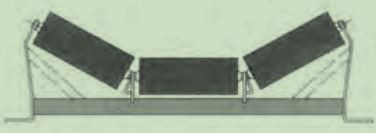 Afrikaans
Afrikaans  Albanian
Albanian  Amharic
Amharic  Arabic
Arabic  Armenian
Armenian  Azerbaijani
Azerbaijani  Basque
Basque  Belarusian
Belarusian  Bengali
Bengali  Bosnian
Bosnian  Bulgarian
Bulgarian  Catalan
Catalan  Cebuano
Cebuano  Corsican
Corsican  Croatian
Croatian  Czech
Czech  Danish
Danish  Dutch
Dutch  English
English  Esperanto
Esperanto  Estonian
Estonian  Finnish
Finnish  French
French  Frisian
Frisian  Galician
Galician  Georgian
Georgian  German
German  Greek
Greek  Gujarati
Gujarati  Haitian Creole
Haitian Creole  hausa
hausa  hawaiian
hawaiian  Hebrew
Hebrew  Hindi
Hindi  Miao
Miao  Hungarian
Hungarian  Icelandic
Icelandic  igbo
igbo  Indonesian
Indonesian  irish
irish  Italian
Italian  Japanese
Japanese  Javanese
Javanese  Kannada
Kannada  kazakh
kazakh  Khmer
Khmer  Rwandese
Rwandese  Korean
Korean  Kurdish
Kurdish  Kyrgyz
Kyrgyz  Lao
Lao  Latin
Latin  Latvian
Latvian  Lithuanian
Lithuanian  Luxembourgish
Luxembourgish  Macedonian
Macedonian  Malgashi
Malgashi  Malay
Malay  Malayalam
Malayalam  Maltese
Maltese  Maori
Maori  Marathi
Marathi  Mongolian
Mongolian  Myanmar
Myanmar  Nepali
Nepali  Norwegian
Norwegian  Norwegian
Norwegian  Occitan
Occitan  Pashto
Pashto  Persian
Persian  Polish
Polish  Portuguese
Portuguese  Punjabi
Punjabi  Romanian
Romanian  Russian
Russian  Samoan
Samoan  Scottish Gaelic
Scottish Gaelic  Serbian
Serbian  Sesotho
Sesotho  Shona
Shona  Sindhi
Sindhi  Sinhala
Sinhala  Slovak
Slovak  Slovenian
Slovenian  Somali
Somali  Spanish
Spanish  Sundanese
Sundanese  Swahili
Swahili  Swedish
Swedish  Tagalog
Tagalog  Tajik
Tajik  Tamil
Tamil  Tatar
Tatar  Telugu
Telugu  Thai
Thai  Turkish
Turkish  Turkmen
Turkmen  Ukrainian
Ukrainian  Urdu
Urdu  Uighur
Uighur  Uzbek
Uzbek  Vietnamese
Vietnamese  Welsh
Welsh  Bantu
Bantu  Yiddish
Yiddish  Yoruba
Yoruba  Zulu
Zulu Understanding the Functionality and Importance of Bearing Housing in Mechanical Systems
Understanding Bearing Housing Key Components in Mechanical Engineering
Bearing housings are a critical component in the field of mechanical engineering and play a significant role in the functionality and reliability of machinery. These structures not only support the bearings but also provide the necessary alignment and protection for rotary elements in various applications, from automotive to industrial machinery.
A bearing housing is typically a sturdy structure that encompasses the bearing within an assembly, providing a secure placement for bearings, which are mechanical elements designed to reduce friction between moving parts. The primary purpose of a bearing housing is to maintain the position of the bearing while protecting it from dirt, debris, and other environmental factors that could lead to premature wear or failure.
Types of Bearing Housings
Bearing housings come in a variety of designs, each tailored to specific applications. The two most common types are split and solid housings.
1. Split Housings As the name suggests, split housings consist of two parts that can be easily assembled or disassembled. This design allows for easy maintenance and replacement of bearings without disturbing the surrounding components. Split housings are often used in large machinery where the accessibility of bearings is crucial.
2. Solid Housings Solid housings are typically monolithic and provide greater rigidity and support for the bearings they protect. These are common in applications where space is limited, and strength is paramount. They are often used in electric motors and other tightly packed machinery.
Materials and Design Considerations
bearing housing

The choice of material for bearing housings is significant and can vary depending on the application requirements. Common materials include cast iron, aluminum, and various plastics. Cast iron is frequently used for its durability and strength, while aluminum offers a lightweight alternative with good corrosion resistance. Engineers must consider factors such as load, speed, temperature, and environmental conditions when selecting materials for bearing housings.
In addition to material considerations, the design of the bearing housing itself can influence performance. Key design elements include the housing's geometry, mounting methods, and lubrication interfaces. Proper alignment and support are crucial to ensure that the bearings operate efficiently and have a longer lifespan. Misalignment can lead to increased wear and ultimately failure of both the bearing and the housing.
Importance in Industrial Applications
In industrial settings, the integrity of bearing housings significantly impacts overall machinery performance. Well-designed and properly maintained bearing housings can reduce downtime and maintenance costs, while poorly designed housings can lead to catastrophic failures, resulting in costly repairs and interruptions in production.
The role of bearing housings in reducing vibration and noise should not be underestimated. By providing a secure and stable environment for bearings, these housings help to minimize operational noise and vibration, resulting in a more comfortable working environment and enhanced equipment lifespan.
Conclusion
Bearing housings are essential components in machinery that ensure the effective functioning of bearings. By providing structural support, alignment, and protection, they play a vital role in enhancing the efficiency and longevity of mechanical systems. Understanding the various types, materials, and design considerations surrounding bearing housings can help engineers and technicians make informed decisions, ultimately leading to improved machinery performance and reliability. As technology evolves, the design and materials used in bearing housings will continue to advance, offering even better solutions for modern engineering challenges.
-
Revolutionizing Conveyor Reliability with Advanced Rubber Lagging PulleysNewsJul.22,2025
-
Powering Precision and Durability with Expert Manufacturers of Conveyor ComponentsNewsJul.22,2025
-
Optimizing Conveyor Systems with Advanced Conveyor AccessoriesNewsJul.22,2025
-
Maximize Conveyor Efficiency with Quality Conveyor Idler PulleysNewsJul.22,2025
-
Future-Proof Your Conveyor System with High-Performance Polyurethane RollerNewsJul.22,2025
-
Driving Efficiency Forward with Quality Idlers and RollersNewsJul.22,2025





























